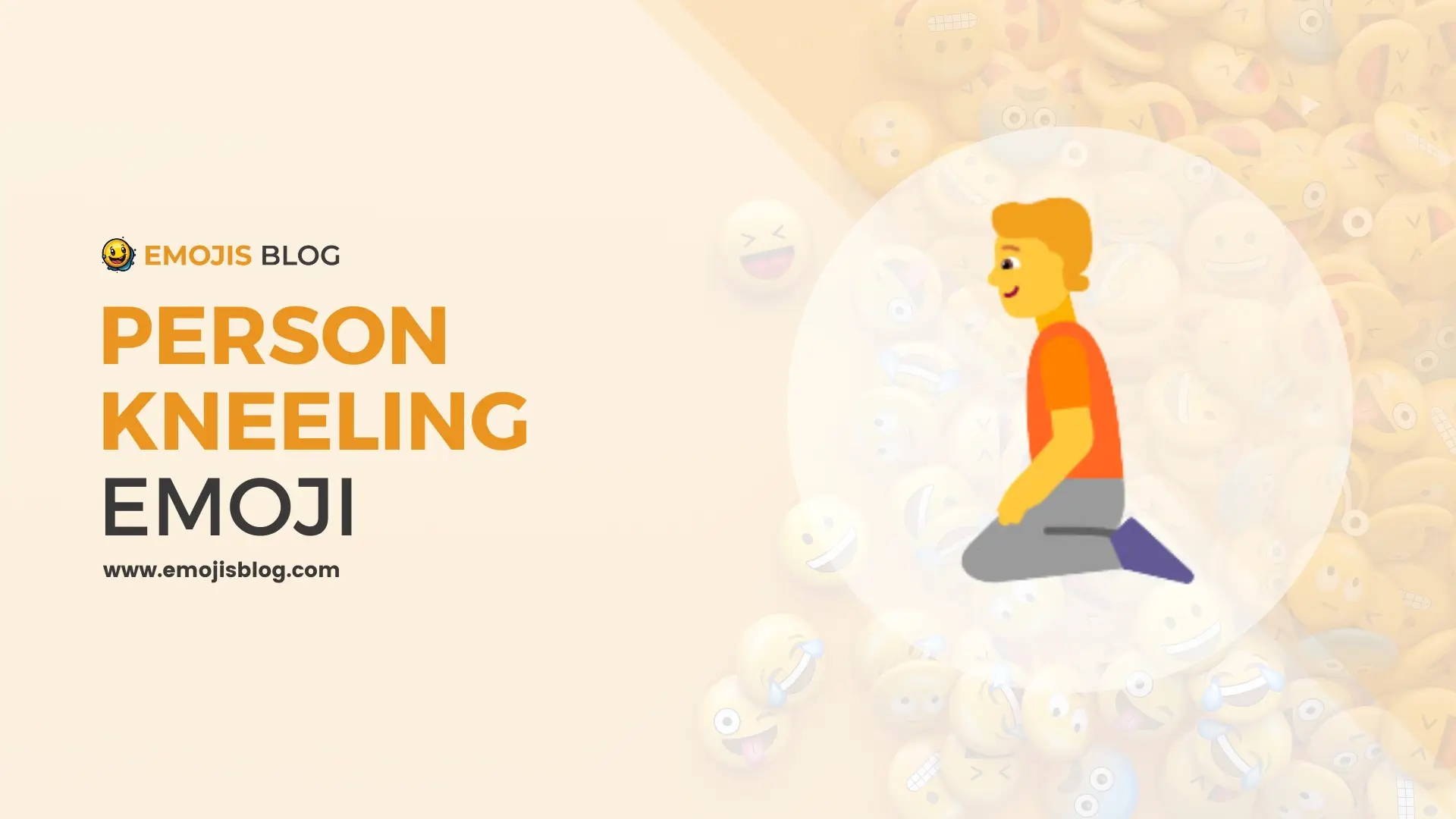What Does The Person Kneeling Emoji Mean 🧎
🧎
Person Kneeling Emoji Meanings 🧎
The person kneeling emoji 🧎, introduced in Unicode 12.0 in 2019, depicts an individual kneeling on one or both knees and is versatile in its use. It commonly represents prayer, religious devotion, and spiritual practices, but can also signify rest, submission, humility, or romantic gestures such as marriage proposals. Its design may vary slightly across platforms, with some offering gender-specific versions while others maintain a gender-neutral appearance. This emoji enriches digital communication by allowing users to convey complex sentiments and actions in a concise visual form.
Technical Information
| Attribute | Details |
|---|---|
| Unicode Version | 12.0 |
| Emoji Version | 12.0 |
| Code Point | U+1F9CE |
| Name | Kneeling Person |
| Introduced Year | 2019 |
| Shortcode | :kneeling_person: |
| Variations | Gender variations (man kneeling, woman kneeling) available on some platforms |
| Category | People & Body |
| Common Uses | Prayer, rest, submission, humility, proposals |
| Platforms | Available on major platforms such as Apple, Google, Microsoft, Samsung, Twitter, Facebook, and more |
| Design | Depicts a person kneeling on one or both knees, with slight variations in design across platforms |
What Does The Person Kneeling Emoji Mean 🧎
The person kneeling emoji 🧎, officially known as “Kneeling Person,” is a relatively recent addition to the emoji lexicon. This emoji was approved as part of Unicode 12.0 in 2019 and subsequently added to Emoji 12.0 the same year. It depicts a person kneeling on one or both knees, and it can be used in various contexts to represent different actions or states.
Visual Representation
The design of the kneeling person emoji varies slightly across different platforms. However, the core concept remains consistent: a person is shown kneeling, usually facing forward. Some platforms offer gender variations, presenting both a kneeling man and a kneeling woman, while others use a gender-neutral representation.
Meanings and Uses
The kneeling person emoji can convey a variety of meanings depending on the context in which it is used. Some common interpretations include:
1. Prayer and Religious Contexts
One of the primary uses of the kneeling person emoji is to represent prayer or religious devotion. It can symbolize someone in a moment of prayer, worship, or meditation. This usage is prevalent among users who want to express spiritual sentiments or acknowledge religious practices.
2. Rest and Relaxation
In a more secular context, the kneeling person emoji can denote someone resting or taking a break. It might be used to indicate that someone is physically tired and has decided to kneel down to rest.
3. Submission and Humility
The act of kneeling is often associated with submission, humility, or deference. Therefore, the emoji can be employed to represent these emotions or actions. For example, it might be used to depict a character in a story who is showing respect or asking for forgiveness.
4. Proposals and Romantic Gestures
Kneeling is a common gesture during marriage proposals. Consequently, the kneeling person emoji can be used in romantic contexts to symbolize proposing marriage or expressing deep affection and commitment.
Technical Information
The kneeling person emoji is part of the Unicode 12.0 standard. Unicode is a universal character encoding standard that assigns a unique code to every character and symbol, ensuring consistency across different platforms and devices. The emoji’s code point in Unicode is U+1F9CE.
Related Emojis
There are several related emojis that can be used in conjunction with the kneeling person emoji to convey more specific messages or to add nuance. Some of these include:
- 🙏 Prayer Hands: Often used together with the kneeling person emoji to emphasize prayer or spiritual practice.
- 💍 Ring: Commonly paired with the kneeling person emoji in the context of marriage proposals.
- 🛌 Person in Bed: Can be used to represent rest and relaxation when combined with the kneeling person emoji.
Conclusion
The kneeling person emoji 🧎 is a versatile symbol that can represent a range of actions and emotions, from prayer and humility to rest and romantic gestures. Its adoption into Unicode and various platforms has allowed users to convey these nuanced meanings in their digital communications effectively. Whether used in a religious, romantic, or casual context, this emoji adds depth and clarity to the messages it accompanies.

